MXA RACE TEST: THE REAL TEST OF THE 2020 KTM 250SX TWO-STROKE
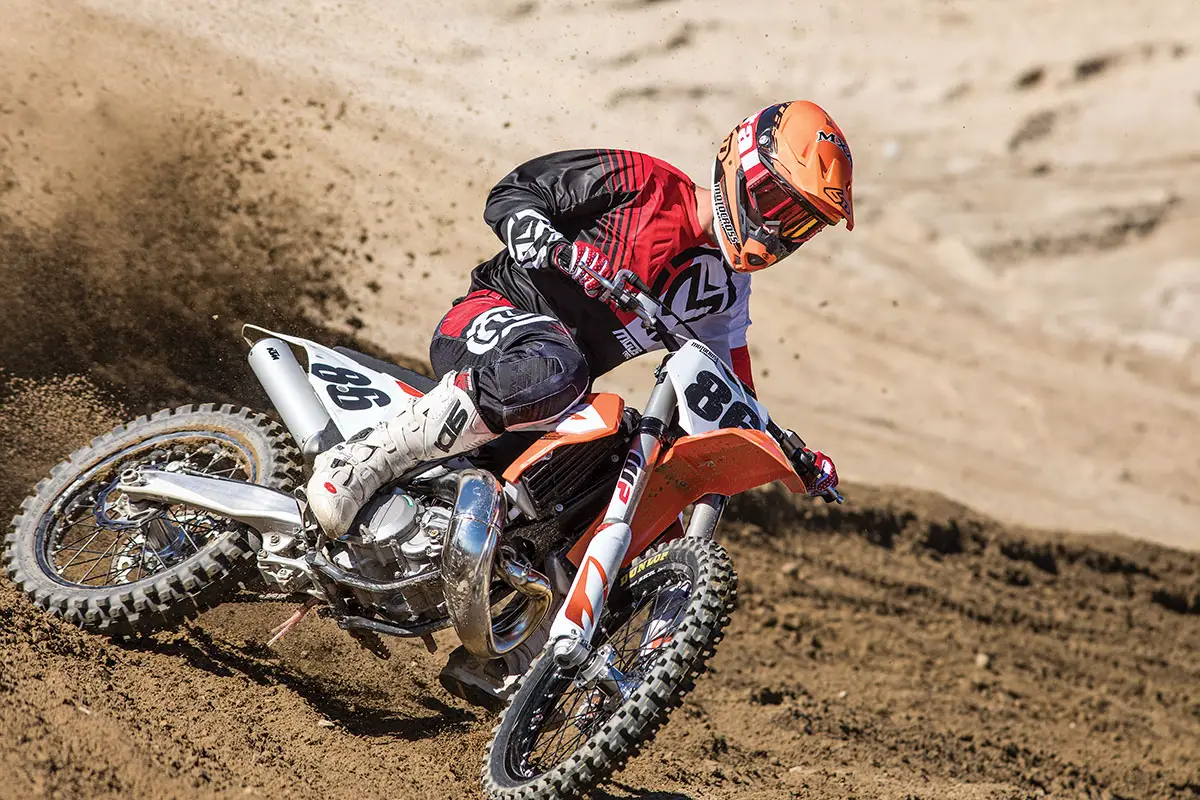
Q: FIRST AND FOREMOST, IS THE 2020 KTM 250SX BETTER THAN THE 2019 250SX?
A: No. Didn’t expect that, did you? In stock trim, the 2020 KTM 250SX is not significantly different from its predecessor.
Q: WHAT’S NEW ON THE 2020 KTM 250SX TWO-STROKE?
A: Very little. Changes made to the 2020 KTM 250SX are limited to three updates:
(1) Graphics. There are redesigned graphics, which for our tastes don’t look a whole lot different from when this motif was first introduced in 2016. The artists move the white blotches around every year, but for all real intents and purposes, the basic radiator shroud design is four years old.
(2) New fork settings and a new name. The previous WP AER air forks are now called WP Xact air forks. The 2020 KTM 250SX forks got revised damping and a few small internal changes, but, as always, the key to dialing in the WP air forks is to find your perfect air pressure setting (don’t rely on the recommended air pressure numbers on the fork sticker—think for yourself)).
(3) Xact rear shock. As with virtually every model year, the rear shock gets new shim settings and a revised compression adjuster.
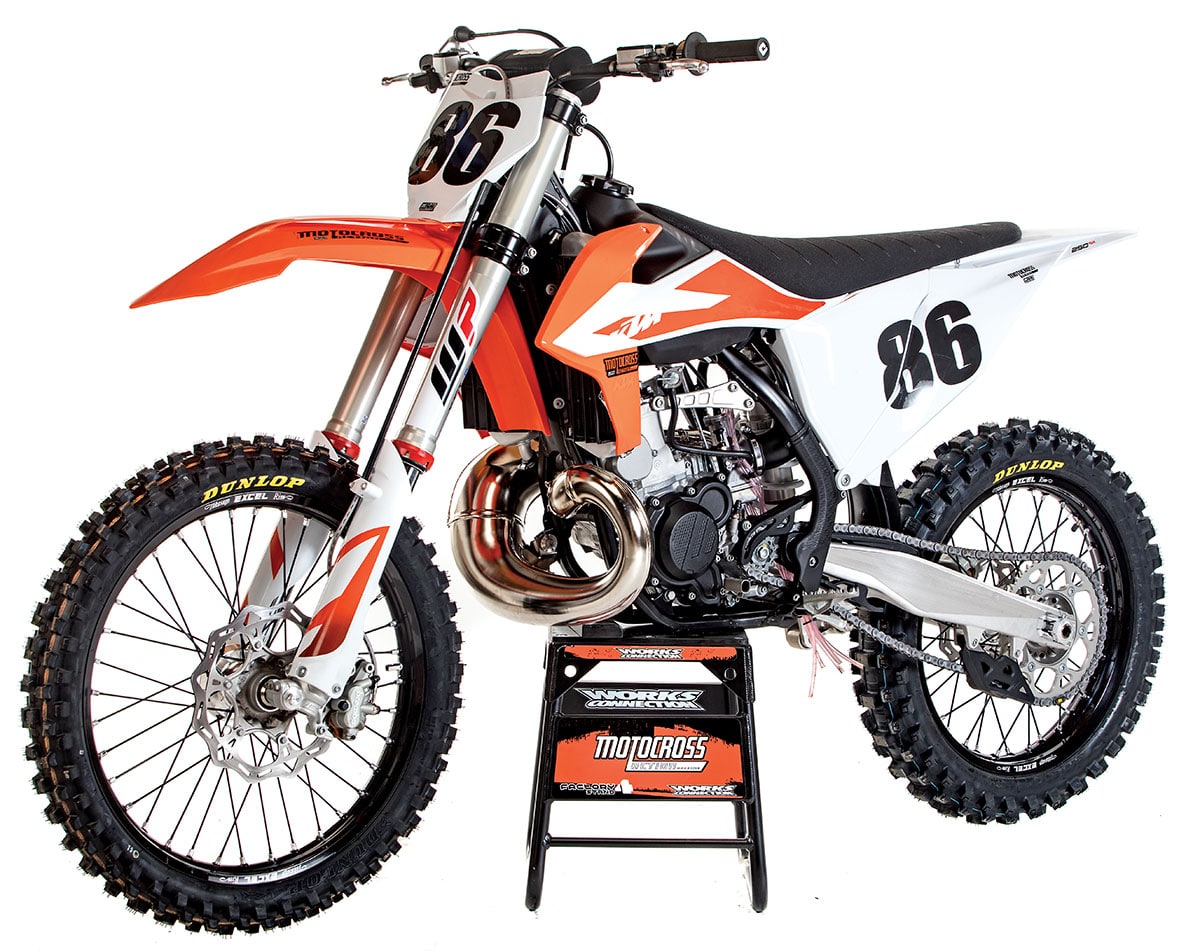
Q: HOW MUCH DOES THE 2020 KTM 250SX COST?
A: Hold on to your hat with one hand and your wallet with the other. The MSRP of the 2020 KTM 250SX two-stroke is $8299. Nowhere is inflation more evident than with the KTM 250SX. The 2020 price ($8299) is up $100 from the 2019 MSRP ($8199), which was up $300 from the 2018 MSRP ($7899), which was up $300 from the 2017 MSRP ($7599). That is a $900 price hike over four model years. The $8299 retail price for the 2020 250SX makes it cost $800 more than the 2020 Yamaha YZ250 two-stroke.
Q: HOW DOES THE 2020 KTM 250SX RUN ON THE DYNO?
A: MXA’s 2020 KTM 250SX pumped out 49.23 horsepower. Those are big numbers, but not the highest horsepower that KTM ever got out of the 250. In fact, back in 2012, the KTM 250SX made more horsepower than the 2020 model, pushing closer to 50 horses; however, after 2012 KTM decided to cut back on peak power in an effort to increase low-to-midrange power. By 2017, the KTM 250SX was down to 46.75 horsepower; but with overall improvements over the last five years, horsepower has crept back up towards the magic 5-0.
In comparison to the 2020 Yamaha YZ250, the KTM makes 49.23 horsepower while the YZ250 makes 46.08 horsepower. As stated, most of the 2020 KTM 250SX’s horsepower is focused in the low-to-mid transition. It is impressive, especially when compared to the YZ250. At 6000 rpm, the KTM makes 2 horses more than the Yamaha. At 7000 rpm, the KTM makes 4 horses more, and at 8000 rpm the KTM makes 2.6 horsepower more. In the YZ250’s defense, while it gives up a ton of ponies below 8800 rpm, it gets them back on top. Once the KTM 250 starts to fall off after 8800, the YZ250 passes it on the power chart until sign-off.
From a horsepower point of view, the KTM 250SX does its best work from bottom to mid, but signs off earlier than the YZ250. It is totally going off the cliff by 9500 rpm.
Q: WHAT DOES THE 2020 KTM 250SX WEIGH?
A: At 212 pounds without gas, the 250 weighs 7 pounds less than a YZ250, 11 pounds less than a KTM 450SXF, 26 pounds less than a Honda CRF450 and 29 pounds less than a Suzuki RM-Z450.
Q: HOW DOES IT RUN ON THE TRACK?
A: Every MXA test rider feels that the KTM 250SX powerplant is overly aggressive when it comes on the pipe. It is in stark contrast to the YZ250, which moves at a steady but sedate pace through the lower part of the curve. It should be noted that the 2019 and 2020 KTM 250SX’s powerband is less explosive than it was in 2017–’18, but that is largely a function of some airbox changes that restricted airflow more than on the past models.
If you are just switching to a two-stroke after years on a four-stroke, your first lap on the 2020 KTM 250SX is going to be an adrenaline pumper. There is an art to racing a two-stroke that involves the contradictory approaches of going for broke and staying calm at the same time. At first, the KTM 250SX will feel like it wheelies out of every berm, spins the rear tire on flat corners, and moves around more than any four-stroke you ever rode.
Don’t worry. After a few laps, or a few days or a few months, you will reposition your body in the Golden Triangle, learn a lot about throttle control and understand that all that free-feeling movement is what makes a 250cc two-stroke a go-anywhere, do-anything, slice-and-dice machine. Stay calm. Don’t hyperventilate. Relax, and let the 250SX do its thing. It will reward you with sensations that you could never get out of a big, heavy, churning, front wheel-handling four-stroke.
Q: HOW CAN YOU ADJUST THE POWER DELIVERY?
A: You don’t have to live with the stock KTM powerband. It can be altered to suit your tastes with simple mods. Here are the five most common mods.
(1) Drilling holes. If you are fast and want more snap and stronger impulses from low to mid, you need to let the engine breathe. How? By drilling holes in the airbox cover. Don’t be scared. The more holes you drill, the better the power gets—with the caveat not to drill any holes next to or in front of the air filter. The additional air flow will liven up the power significantly. Maybe more than you want. You may have to go richer on the needle and adjust the air screw.
(2) Gear it up. If you think that the KTM 250SX powerband is too short, especially if you came off of a YZ250, try gearing it up. “Gearing it up” means adding a rear sprocket with one less tooth on the rear. Gearing the 250SX up will smooth out the power, lengthen the gap between gears and make it feel like it pulls further in the rpm range, thus requiring the rider to shift less.
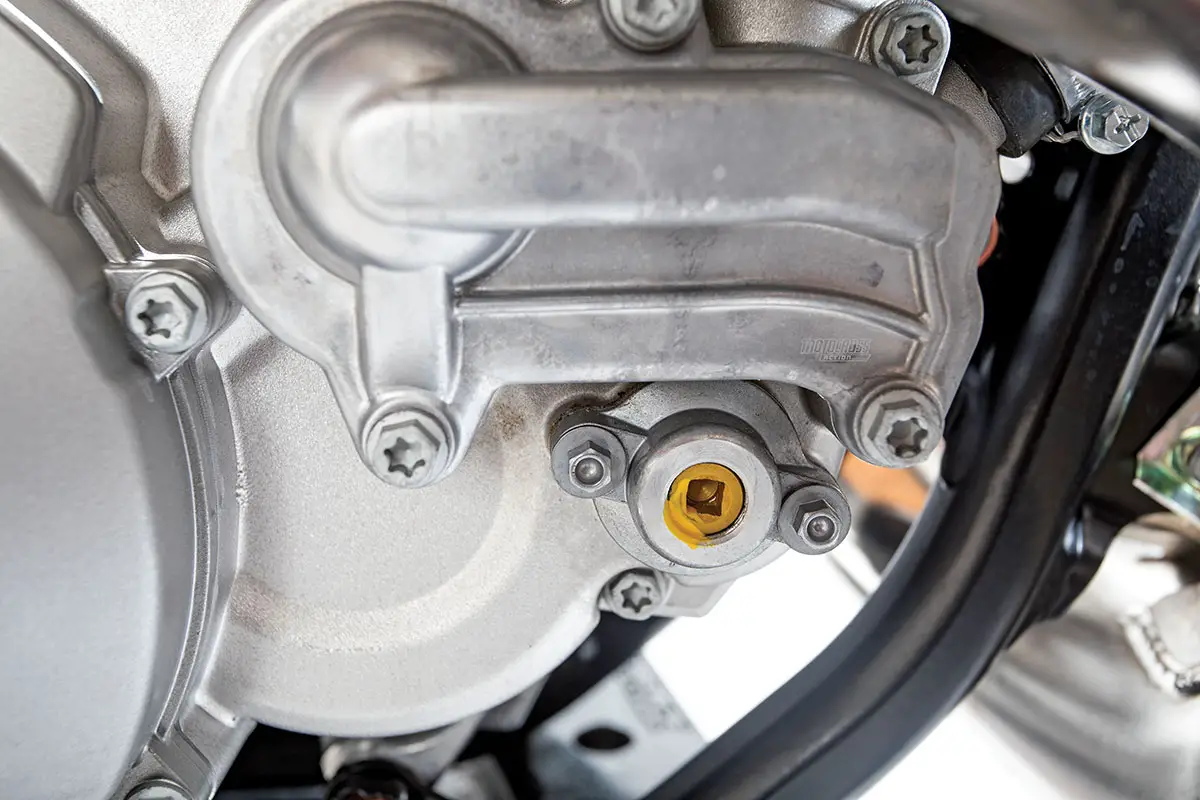
(3) Adjust the power valve. There is a brass screw on the right side of the KTM engine, just below the water pump, that allows you to adjust the power valve spring’s preload. Turning the setting out (counterclockwise) brings the 250SX powerplant to life faster. If you turn it too far, the powerband will become erratic and abbreviated. Going in on the power-valve adjuster (clockwise) smooths out and mellows the powerband. MXA test riders found their sweet spot at 1-1/2 turns in from all the way out. This slowed the revs, extended the powerband and smoothed out the erratic midrange behavior.
(4) Power-valve auxiliary springs. The brass power-valve adjuster changes the preload on the main power-valve spring, but KTM offers three different rate auxiliary springs (green, yellow and red). Changing the auxiliary spring can make the exhaust flap snap open quicker (red spring) or slower (green spring). The yellow spring is the stock spring. While the larger-diameter main power-valve spring determines when the power-valve flapper begins to open, the smaller color-coded auxiliary spring determines how fast it opens and at what rpm it will be fully open. Most MXA test riders prefer to run the yellow auxiliary spring.
(5) Swapping ignition maps. The KTM 2020 250SX comes from the factory with two different ignition maps. But, since there is no map switch on the 2020 KTM 250SX, it isn’t always obvious that the maps can be changed. KTM 250SX owners can change from the stock (performance) map to the mellow map by unplugging one wire. The wire is located under the left side of the fuel tank. The wire has a white male/female plastic connector, and since it is the only white connector under the frame, it is easily identified. The two ignition maps embedded into the KTM’s black box are mellow and performance. Unplug the wire to activate the mellow map. The mellow map takes bark out of the engine. The power will be smoother and easier to modulate. It is especially useful on rock-hard or slippery surfaces. Unplugging the wire is worth trying. The performance map is really the stock map. It is activated when the white connector ends are plugged together. Every MXA test rider prefers the performance map, and that is the way the bike is shipped from the factory.
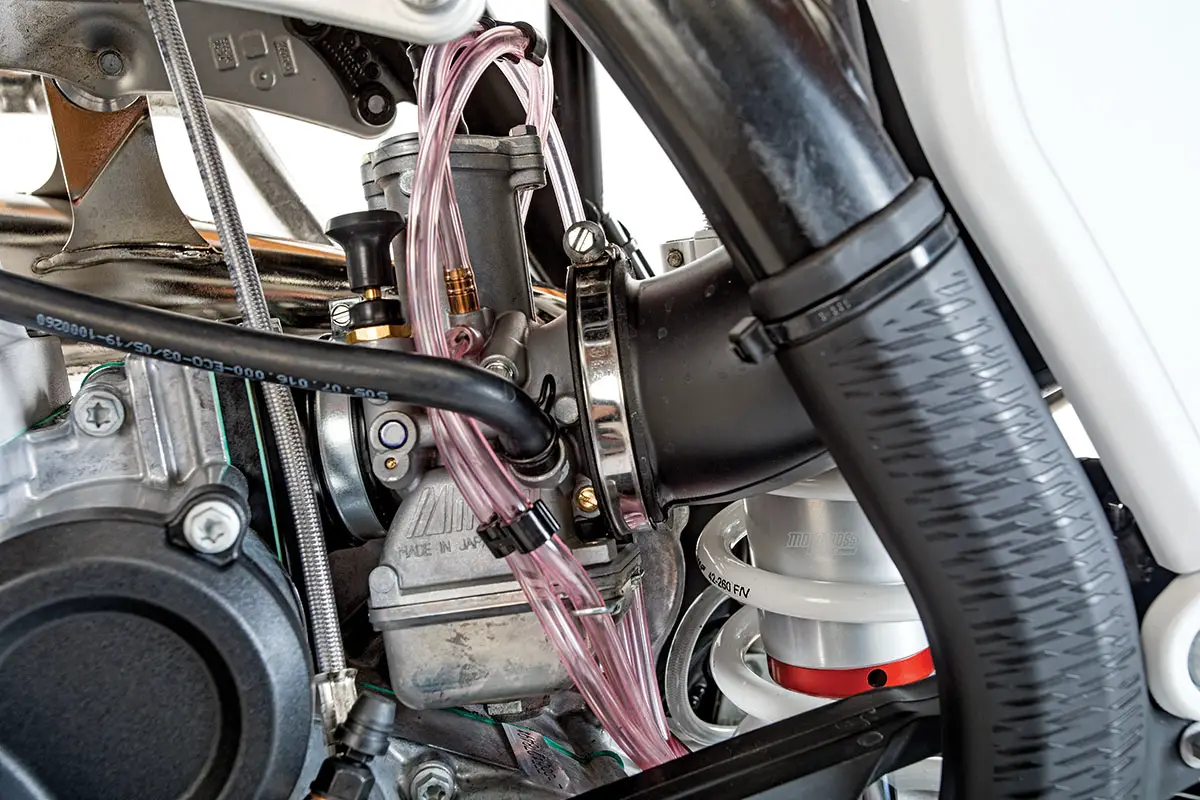
Q: HOW DO YOU FIND YOUR PERFECT AIR PRESSURE ON THE WP XACT FORKS?
A: The advantage of an air fork is that the pressure can be changed to fit different track conditions, rider weights and skill levels. As a rule of thumb, if you aren’t bottoming or riding in a harsh spot in the stroke, all is well. But, to get the optimum feel, you will need to find the perfect air pressure for your riding style. Here is how to do it.
Put a zip-tie around the right fork leg and then set the air pressure to the stock 148 psi (10.2 bar). Go out and ride a couple laps at full speed. Then, look at the position of the zip-tie on the fork leg. If it is nowhere near bottoming, decrease the air pressure by 2 psi, push the zip-tie back up, and go back out on the track. Keep doing this until you get the zip-tie within 1-1/2 inches from bottoming. That air pressure will be your personal air pressure. Why should you leave 1-1/2 inches of travel in the fork? Because at some point during a race, you are going to jump too far, jump too short or suddenly develop talent that you didn’t know you had. The 1-1/2 inches is wiggle room.
Q: WHAT DID WE HATE?
A: The hate list:
(1) Airbox. The KTM airbox robs valuable power. There is a fix, but as a rule, we prefer bikes that don’t require the owner to break out a Makita drill.
(2) Price. The benefit of two-strokes, apart from their fun factor and ease of maintenance, is that they have fewer moving parts. Fewer moving parts should result in a lower retail price. In the case of the 2020 KTM, it does—for the Yamaha YZ250.
(3) Frame. Fast riders like the stiffer 2019-2020 frame because it is more responsive to rider input. Slower riders don’t like the 2020 frame as much because it feeds back track roughness.
(4) Engine. This is undoubtedly a powerful engine, although as it sits, it does all its work in the midrange, leaving nothing on top. We want a smoother engine that pulls further.
Q: WHAT DID WE LIKE?
A: The like list:
(1) Brakes. They are awesome, incredible and delightful.
(2) Hydraulic clutch. KTM’s Belleville washer hydraulic clutch is self-adjusting. Best of all, the DDS clutch has rubber dampers that can take a beating from a clutch abuser.
(3) Air filter. We love the ease of changing the 250SX’s air filter. In a world dominated by hard-to-install air filters, KTM’s is almost foolproof
(4) Hour meter. We not only like that the 2020 KTM comes with an hour meter but that it is located on the top of the triple clamps so it can easily be checked.
(5) Forks. The WP 48mm forks work great for a wide range of riders. There is a little learning curve in finding your perfect air pressure but nothing like the nightmare of PSF and SFF-TAC forks.
(6) Power-valve adjuster. We love that we can adjust the power valve, but hate the Robertson Wrench tool needed to do it. Buy a Kreft Powerdial to make adjustments without a fuss. Until then, do what every other KTM 250SX owner does—jam a flat-bladed screwdriver in the brass adjuster.
(7) Tires. The 2020 KTM 250SX comes stock with Dunlop MX3S tires. MXA test riders prefer the MX3S front tire over other Dunlop fronts—with the caveat that this is an intermediate-terrain tire, and if you run it on hard-pack it will shed knobs.
(8) Handling. You haven’t lived until you’ve ridden a 212-pound machine with instant throttle response and the ability to change lines mid-corner. To make it work to its fullest, you need to balance out the relationship between fork height and race sag.

Q: WHAT DO WE REALLY THINK?
A: If you are conservative, you will find peace of mind with the 2020 Yamaha YZ250. It is a proven design that hasn’t changed much in the last 14 years. It costs less and makes less horsepower. The YZ250 isn’t the best 250cc two-stroke made; it is just the safest bet. If you want the 250 two-stroke with the most horsepower, best brakes, strongest clutch, lightest weight, smoothest transmission and R&D that isn’t 14 years old, go with the 2020 KTM 250SX.
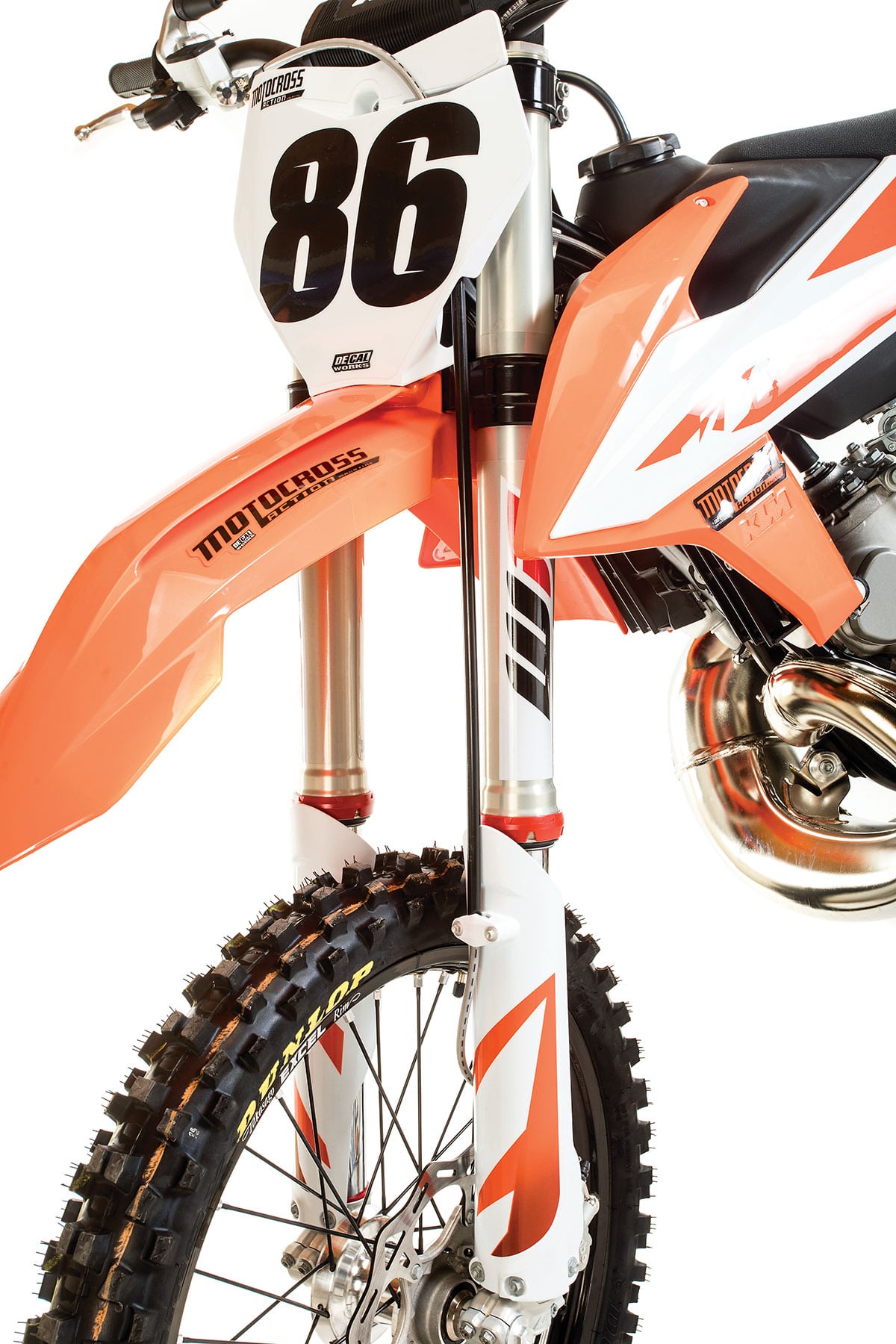
MXA’S 2020 KTM 250SX SETUP SPECS
This is how we set up our 2020 KTM 250SX for racing. We offer it as a guide to help you find your own sweet spot.
WP FORK SETTINGS
As a general rule, first find an air pressure that suits your weight and skill level. Then, start adjusting the clickers. We recommend adjusting the air pressure in 2-pound increments. While the stock air pressure is 148 psi, we had riders who liked it as low as 140 psi. KTM gives you a digital air pump when you buy the bike, so you don’t have to worry about spending the extra cash; you just have to remember to bring it with you to the track. These are the settings we ran on the 2020 KTM 250SX (stock settings in parentheses):
Air pressure: 144 psi (148 psi)
Compression: 20 clicks out (12 clicks out)
Rebound: 12 clicks out
Fork height: 2nd line
Notes: The stock settings are stiff. All testers lowered the stock air pressure and went out significantly on compression.
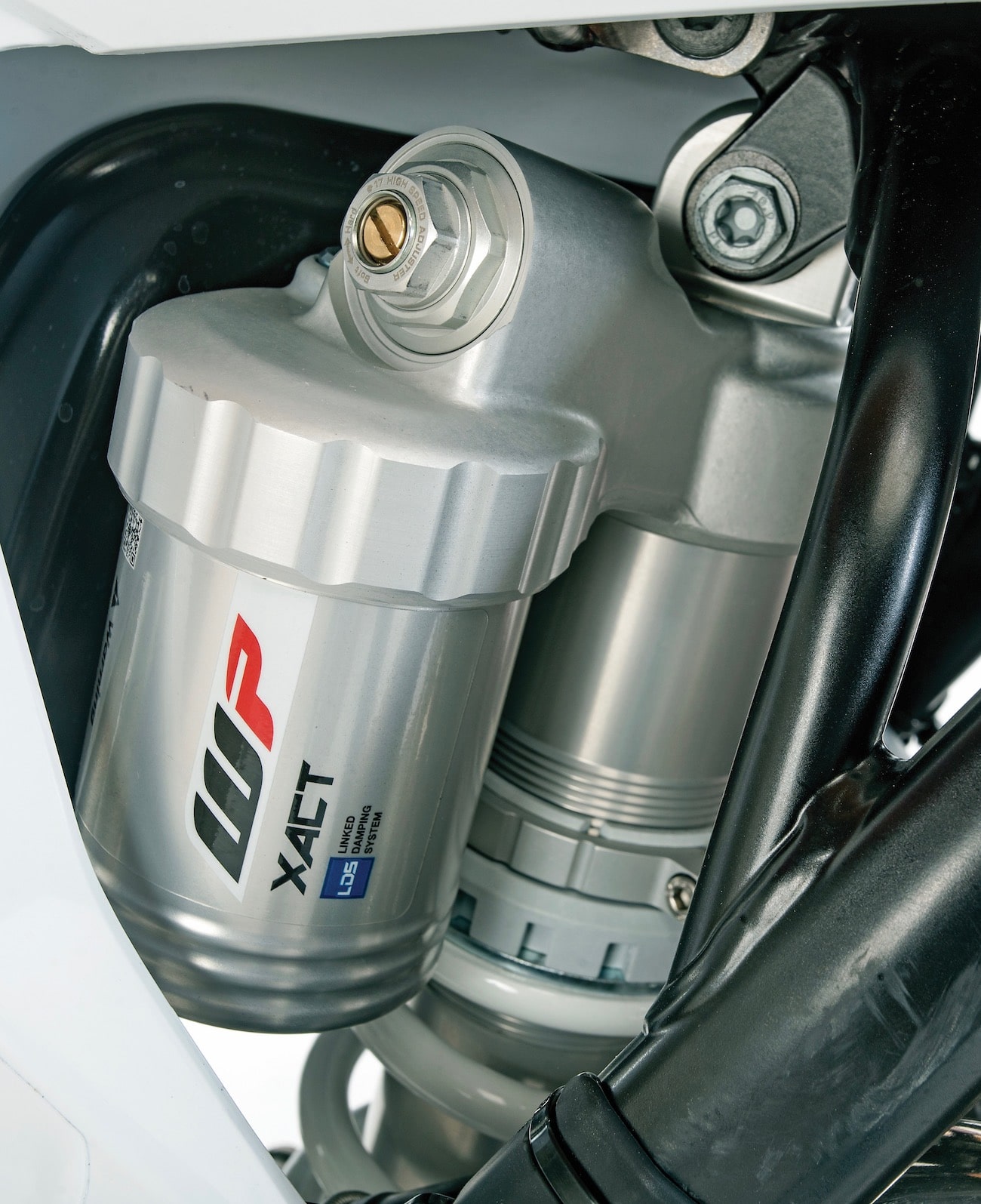
WP SHOCK SETTINGS
The KTM’s rear shocks have always been good; they just haven’t been helped by the litany of oddball forks that KTM has spec’ed on the bike. The new shock and fork combo are finally in sync with each other. For hardcore racing, we recommend this shock setup for the 2020 KTM 250SX (stock specs are in parentheses):
Spring rate: 42 N/mm
Hi-compression: 2 turns out
Lo-compression: 15 clicks out (12 out)
Rebound: 14 clicks out (15 out)
Race sag: 105 mm
Notes: Take it easy on the preload ring; it deteriorates fast. We pry the ring with a long screwdriver using the frame as a fulcrum instead of using a hammer and a punch.
2020 MIKUNI TMX 38 JETTING SPEC
Here’s what we ran in our 38mm TMX in 2020 (stock settings in parentheses):
Main jet: 450
Pilot: 35
Needle: 6BFY43-71
Clip: 3rd
Air screw: 1-1/2 turns out
Notes: If the bike feels boggy off idle or wants to go “wah” before the power kicks in, try tuning the air screw. Have a friend hold the throttle setting at 1,800 rpm while you turn the air screw in and out. When the engine’s idle reaches its highest peak rpm, that is where it should be.


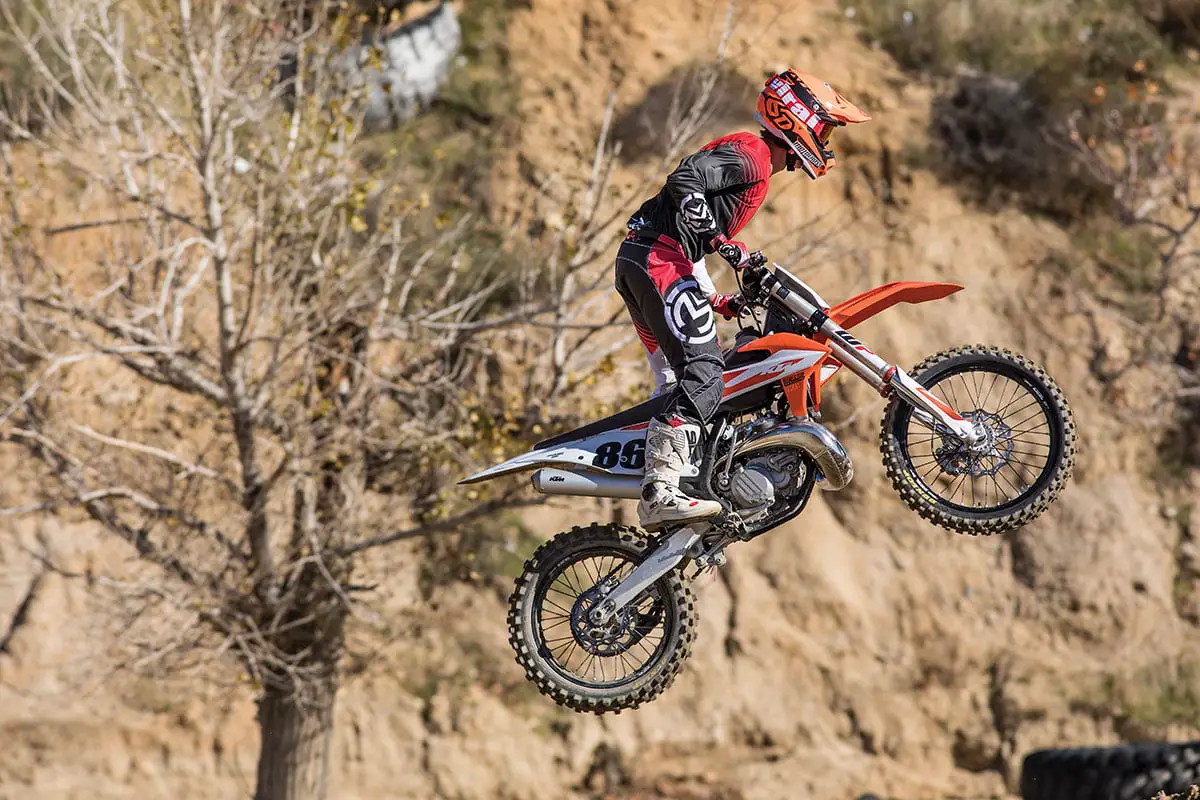
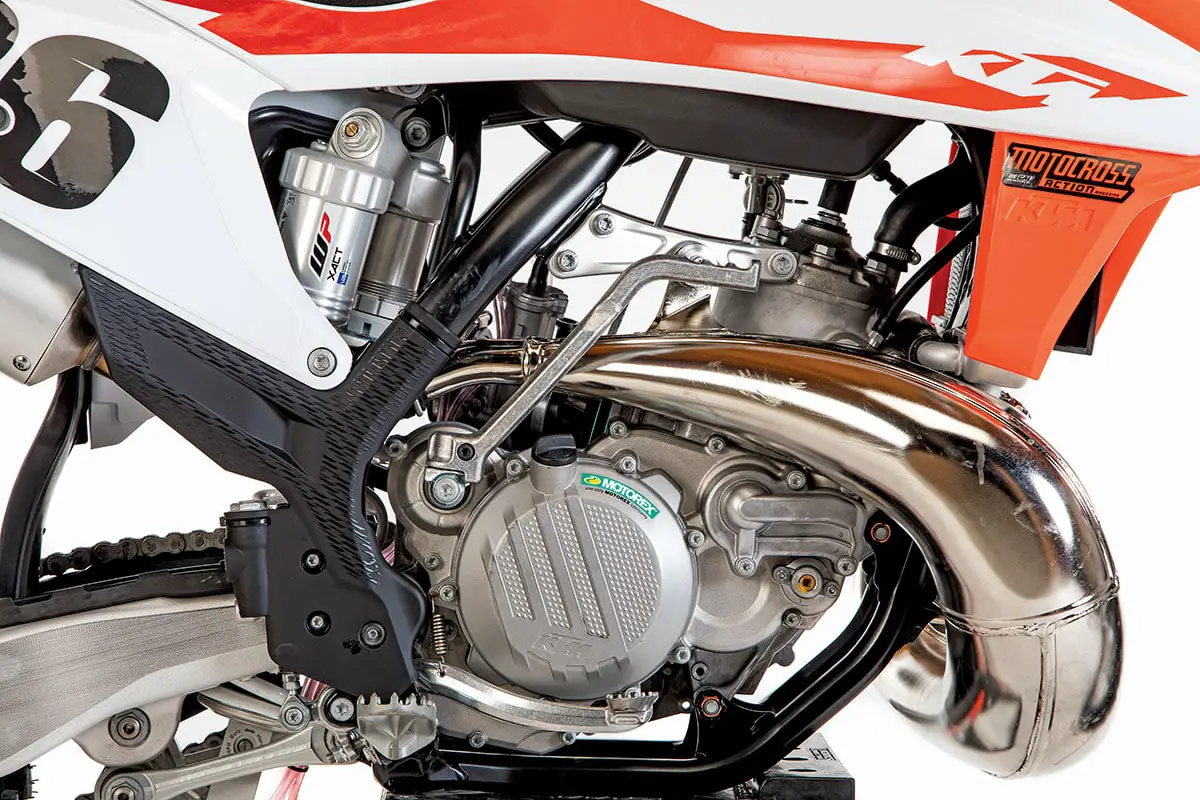
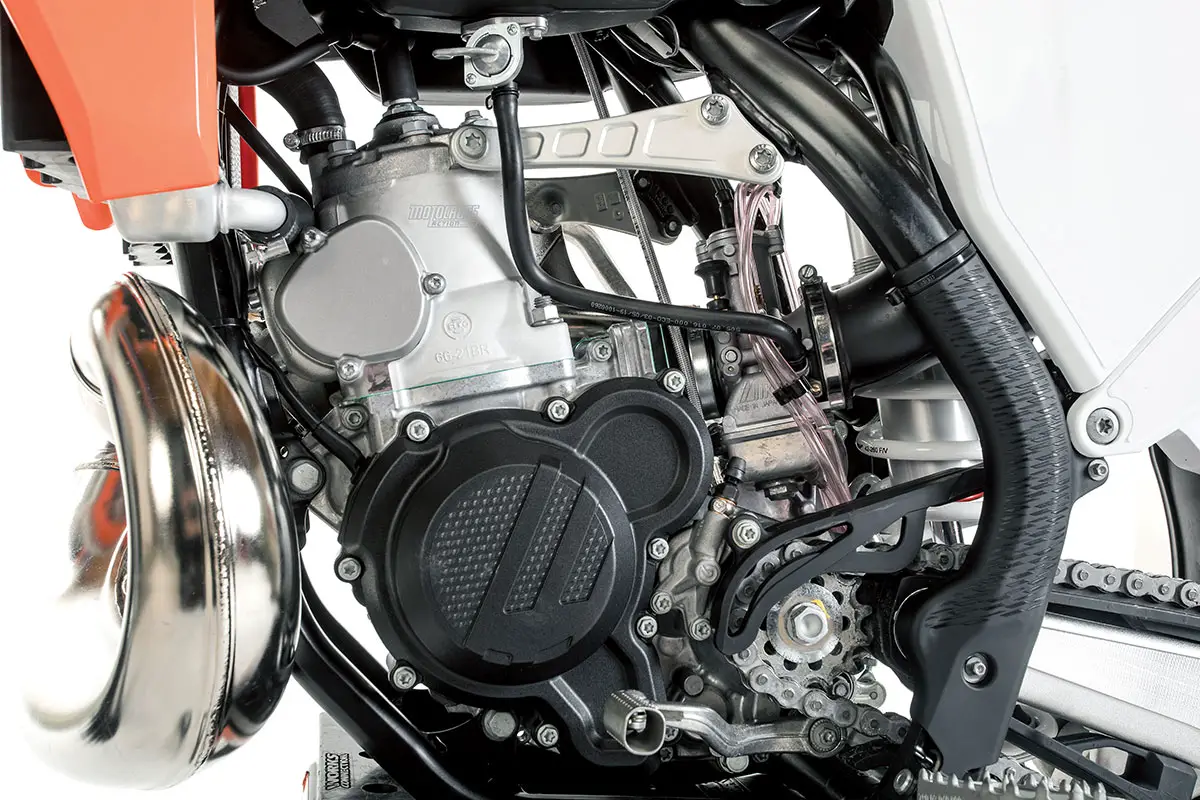

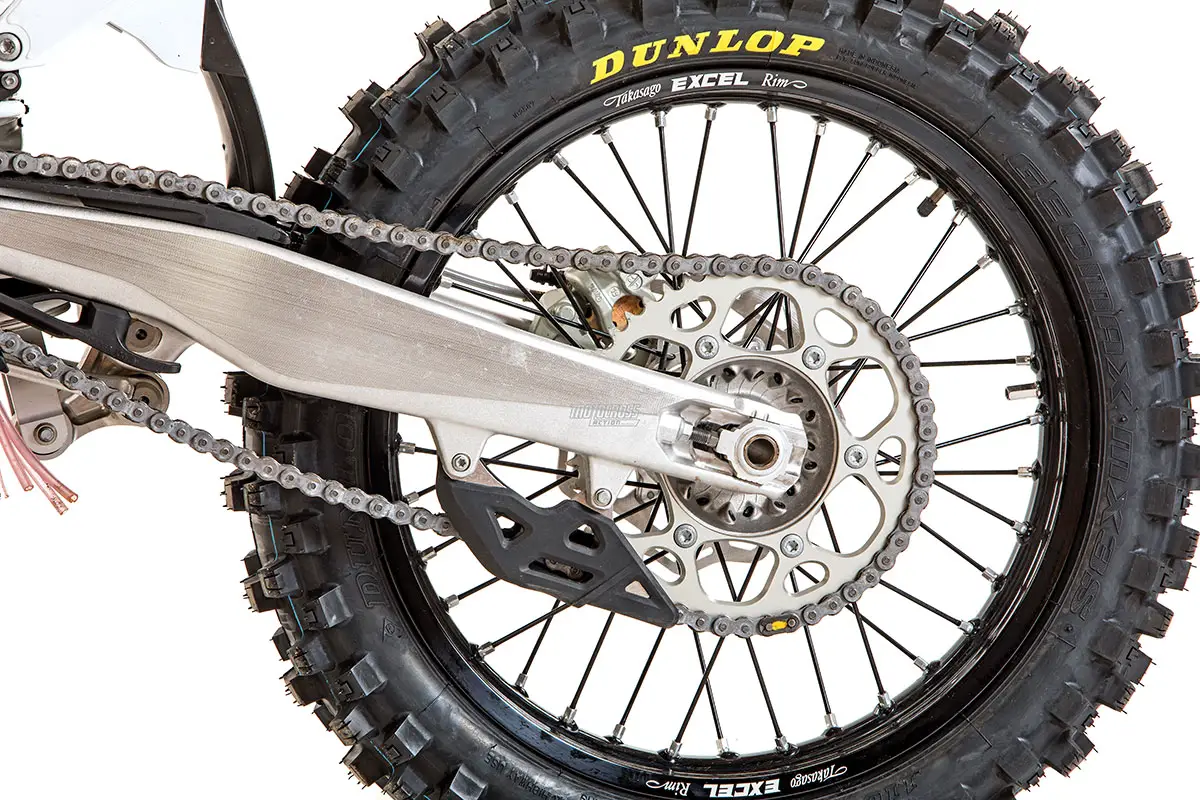
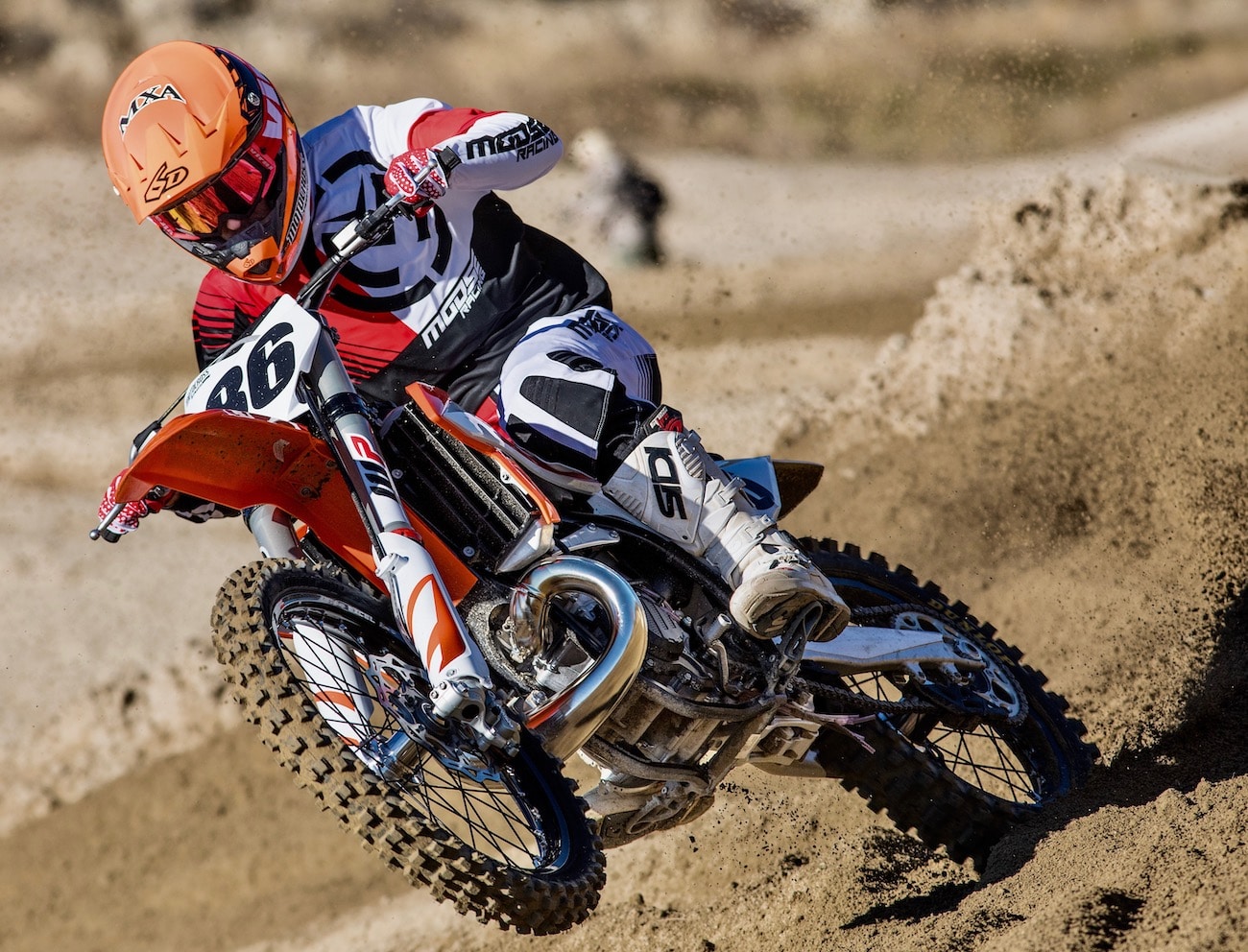



Comments are closed.